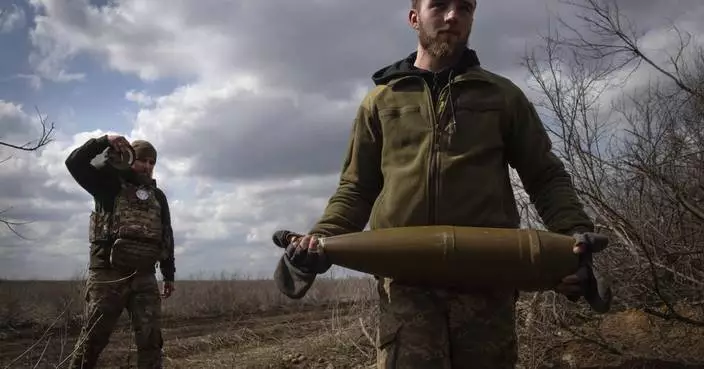The U.S. Census Bureau is using new high-tech tools to help get an accurate population count next year as its faces challenges tallying people of color who live in remote places and can be wary of the federal government.
The agency is using aerial images of rural communities and hard-to-reach areas to verify addresses and determine where to send workers to ensure everyone is counted, Census Bureau Director Steven Dillingham said.
Satellites and planes take photos, and bureau employees compare the housing captured in the images to digital maps from the last census, in 2010. It takes a fraction of the time needed by workers in the field.

In this May 9, 2018, photo, Travis Johnson, 27, and his girlfriend, Chanika Green, 18, sit in this Shelby, Miss., apartment and talk with the nonprofit group Save the Children about their community's fight against poverty. The U.S. Census Bureau is using new high tech tools like aerial imagery to help get an accurate 2020 Census and avoid undercounting communities struggling with poverty. (AP PhotoRussell Contreras)
The agency has used geographic technology since 1990 but has never had access to such accurate tools from the air, said Deirdre Dalpiaz Bishop, head of the bureau's geography division.
That technology — known as geographic information system, or GIS — uses computers to analyze neighborhoods, land formations, rivers and other data captured by satellites or traditional mapping.
The new technology to improve the census comes amid concerns that tribal areas and communities of color may be undercounted in the every-10-year tally that determines the amount of federal money states receive and whether they gain or lose U.S. congressional seats.

FILE - In this March 26, 2018 photo, U.S. Rep. David Cicilline completes his census form on a computer at a library in Providence, R.I., during the nation's only test run of the 2020 Census. The U.S. Census Bureau is using new high-tech tools to help get an accurate population count next year as its facing criticism for the way it plans to reach out to people of color. (AP PhotoMichelle R. Smith,File)
The U.S. Supreme Court is deciding whether the Trump administration can add a citizenship question to the 2020 census, which opponents say would suppress the count of immigrants who fear revealing their status to federal officials.
The Census Bureau also is facing criticism for planning internet and telephone questionnaires, which advocates say would be more likely to overlook rural areas without reliable communication infrastructure.
Steven Romalewski, director of the City University of New York's Mapping Service, said the criticism is fair but credited the Census Bureau for using its geographic and aerial technology to gather needed data about the most difficult populations to count.

In this May 9, 2018 photo, Starr Jones, 21, stands outside her Shelby, Miss., apartment with her 9-month-old son, Jarvis Kemp, after talking with the nonprofit group Save the Children about her community work to fight poverty. The U.S. Census Bureau is using new high tech tools like aerial imagery to help get an accurate 2020 Census and avoid undercounting communities struggling with poverty. (AP PhotoRussell Contreras)
"The technology alone is no guarantee that you will have an accurate count," said Romalewski, who is mapping "hard to count" communities ahead of the census. "But if you leverage data with satellite imagery, you have the best information before you."
That's what census employees intend to do while avoiding the political battles, Dillingham said.
"The culture of the census dictates us to be impartial," the bureau director said during a recent trip to New Mexico, which has one of the most difficult populations to accurately count.
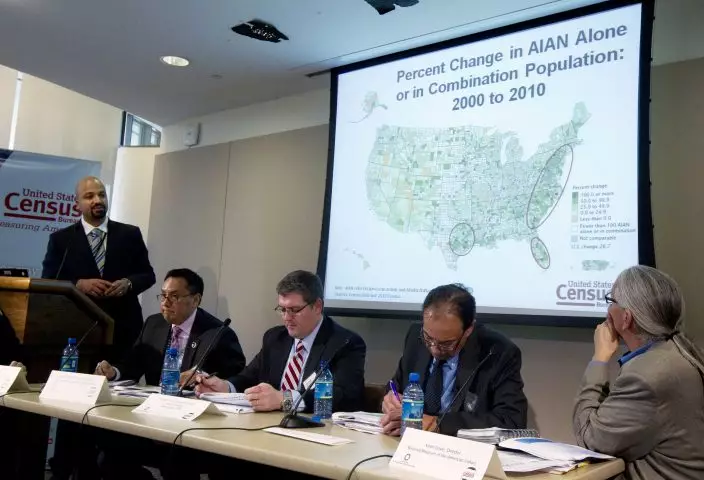
FILE - In this Jan. 25, 2012 file photo, Racial Statistics Branch Chief of the U.S. Census Bureau Nicholas Jones, left, speaks with panelists during a forum about the American Indian and Alaska native population at the National Museum of the American Indian in Washington. The U.S. Census Bureau is using new high-tech tools to help get an accurate population count next year as its facing criticism for the way it plans to reach out to people of color. (AP PhotoManuel Balce Ceneta, File)
The state has a sizable Native American population and the highest percentage of Hispanic residents in the nation. Bishop said the technology will especially help such areas that have struggled for accurate counts.
Another is Mississippi's majority-black Bolivar County, where only 59.7% of households mailed back their 2010 census questionnaire, according to CUNY's Center for Urban Research.
The national rate was 74% in 2010, according to a Census Bureau news release.
The bureau began using the new imagery technology in 2013, Bishop said. Employees have been double- and triple-checking satellite images and those captured by the Department of Agriculture's National Agriculture Imagery Program during the growing seasons in the continental U.S.
Around 100 technicians are able to examine the entire nation with satellite and aerial images while sitting at their computers. They are assigned specific neighborhood blocks and look for growth and decline in the number of residential buildings by comparing images from 2009 to the present.
Two hours of canvassing in the field during the 2010 census now takes less than two minutes in the office, the bureau said.
"With that information, we can then decide to use our staff more efficiently" to knock on doors of homes that did not respond to online or phone questionnaires, Bishop said.
The bureau gave a demonstration of the new technology at conference early this year. Employees showed how they could analyze county subdivisions on maps by looking up a certain percentage of Spanish speakers or those making a certain amount of money.
The specific addresses pinpointed by the aerial imagery are largely kept private, but can be shared with some tribal and city governments to help create boundaries and zoning areas, Bishop said. After a certain period, the information has to be destroyed, she said.
The head of the Census Bureau came to New Mexico last month for a firsthand look at the struggle to count people who live in far-flung places where the new technology could help.
Dillingham and a group from the Navajo Nation ventured along a winding dirt road through mesas and small canyons to the home of Daniel Piaso, about 12 miles (19 kilometers) west of To'Hajiilee, New Mexico.
Dillingham tried to ask Piaso, who speaks only Navajo, about the dwellings on his property. A confused Piaso responded with help from an interpreter.
Arbin Mitchell, a tribal partnership specialist with the U.S. Census Bureau, said elders like Piaso are most at risk of missing out.
"They do not trust strangers who might approach them asking questions about the census," Mitchell said.
U.S. Sens. Martin Heinrich and Tom Udall, both New Mexico Democrats, wanted Dillingham to see the challenges of counting rural and poor populations with little to no internet access.
"We have a lot of concerns, so we are doubling down to get the message out to people about how important the census is," Heinrich said.
Russell Contreras is a member of The Associated Press' race and ethnicity team. Follow him on Twitter at http://twitter.com/russcontreras .
KYIV, Ukraine (AP) — A big, new package of U.S. military aid will help Ukraine avoid defeat in its war with Russia. Winning will still be a long slog.
The arms and ammunition in the $61 billion military aid package should enable Ukraine to slow the Russian army's bloody advances and block its strikes on troops and civilians. And it will buy Ukraine time — for long-term planning about how to take back the fifth of the country now under Russian control.
“Ultimately it offers Ukraine the prospect of staying in the war this year,” said Michael Clarke, visiting professor in war studies at King’s College London. “Sometimes in warfare you’ve just got to stay in it. You’ve just got to avoid being rolled over.”
The U.S. House of Representatives approved the package on Saturday after months of delays by some Republicans wary of U.S. involvement overseas. It was passed by the Senate on Tuesday, and President Joe Biden said he would sign it Wednesday.
The difference could be felt within days on the front line in eastern and southern Ukraine, where Russia’s much larger army has been slowly taking territory against massively outgunned Ukrainian forces.
The aid approval means Ukraine may be able to release artillery ammunition from dwindling stocks that it has been rationing. More equipment will come soon from American stocks in Poland and Germany, and later from the U.S.
The first shipments are expected to arrive by the beginning of next week, said Davyd Arakhamia, a lawmaker with Ukrainian President Volodymyr Zelenskyy’s Servant of the People party.
But opposition lawmaker Vadym Ivchenko, a member of the Ukrainian parliament’s National Security, Defense and Intelligence Committee, said logistical challenges and bureaucracy could delay shipments to Ukraine by two to three months, and it would be even longer before they reach the front line.
While details of the shipments are classified, Ukraine’s most urgent needs are artillery shells to stop Russian troops from advancing, and anti-aircraft missiles to protect people and infrastructure from missiles, drones and bombs.
What’s coming first is not always what front-line commanders need most, said Arakhamia, the Ukrainian lawmaker. He said that even a military giant like the U.S. does not have stockpiles of everything.
“The logic behind this first package was, you (the U.S.) finds our top priorities and then you see what you have in the warehouses,” Arakhamia said. “And sometimes they do not match.”
Hope for future breakthroughs for Ukraine still hangs on more timely deliveries of Western aid, lawmakers acknowledge.
Many experts believe that both Ukraine and Russia are exhausted by two years of war and won’t be able to mount a major offensive — one capable of making big strategic gains — until next year.
Still, Russia is pushing forward at several points along the 1,000-kilometer (600-mile) front, using tanks, wave after wave of infantry troops and satellite-guided gliding bombs to pummel Ukrainian forces. Russia is also hitting power plants and pounding Ukraine’s second-largest city, Kharkiv, which is only about 30 kilometers (some 20 miles) from the Russian border.
Ivchenko said the goal for Ukraine’s forces now is to “hold the line” until the bulk of new supplies arrive by mid-summer. Then, they can focus on trying to recapture territory recently lost in the Donetsk region.
“And probably ... at the end of summer we’ll see some movement, offensive movement of the Ukrainian armed forces,” he said.
Some military experts doubt Ukraine has the resources to mount even small offensives very soon.
The U.S. funding “can probably only help stabilize the Ukrainian position for this year and begin preparations for operations in 2025,” said Matthew Savill, director of military sciences at the Royal United Services Institute, a think tank.
In the best-case scenario for Ukraine, the American aid will give commanders time to reorganize and train its army — applying lessons learned from its failed summer 2023 offensive. It may also galvanize Ukraine’s allies in Europe to increase aid.
“So this just wasn’t about Ukraine and the United States, this really affected our entire 51-country coalition,” said U.S. Congressman Bill Keating, a Democrat who visited Kyiv on Monday as part of a four-member congressional delegation.
Zelenskyy insists Ukraine's war aim is to recapture all its territory from Russia — including Crimea, seized illegally in 2014. Even if the war ultimately ends through negotiation, as many experts believe, Ukraine wants to do that from as strong a position as possible.
Whatever happens on the battlefield, Ukraine still faces variables beyond its control.
Former U.S. President Donald Trump, who seeks to retake the White House in the November election, has said he would end the war within days of taking office. And the 27-nation Europe Union includes leaders like Hungarian President Viktor Orbán and Slovakian Prime Minister Richard Fico, who have opposed arming Ukraine.
Ukraine’s allies have held back from supplying some arms out of concern about escalation or depleting their own stocks. Ukraine says that to win the war it needs longer-range missiles it could use for potentially game-changing operations such as cutting off occupied Crimea, where's Russia's Black Sea fleet is based.
It wants Army Tactical Missile Systems, known as ATACMs, from the U.S. and Taurus cruise missiles from Germany. Both governments have resisted calls to send them because they are capable of striking targets deep within Russian territory.
The new bill authorizes the president to send Ukraine ATACMS “as soon as practicable.” It's unclear what that will mean in practice.
Sometimes, promised weapons have arrived late, or not at all. Zelenskyy recently pointed out that Ukraine is still waiting for the F-16 fighter jets it was promised a year ago.
Meanwhile, Russia is using its advantage in troops and weapons to push back Ukrainian forces, perhaps seeking to make maximum gains before Ukraine's new supplies arrive.
For weeks it has pummeled the small eastern city of Chasiv Yar, at the cost of 900 soldiers killed and wounded a day, according to the U.K. Ministry of Defense.
Capturing the strategically important hill town would allow them to move toward Sloviansk and Kramatorsk, key cities Ukraine controls in the eastern region of Donetsk. It would be a significant win for Russian President Vladimir Putin, who Western officials say is bent on toppling Ukraine’s pro-Western government.
Russian pressure was aimed not just at gaining territory, but on undermining Zelenskyy and bolstering critics who say his war plan is failing, said Clarke of King's College London.
The U.S. aid package decreases the likelihood of a political crisis in Ukraine, and U.S. Speaker Mike Johnson deserves credit for pushing it through Congress, he said.
"He held history in his hands,” Clarke said.
Follow AP’s coverage of the war in Ukraine at https://apnews.com/hub/russia-ukraine

From left, U.S. representatives Nathaniel Moran, R-Tx, Tom Kean Jr, R-NJ, Bill Keating, D-Mass, and Madeleine Deane, D-Pa, talk to journalists during a joint news conference outside Saint Michael cathedral in Kyiv, Ukraine, Monday, April 22, 2024. A newly approved package of $61 billion in U.S. aid may prevent Ukraine from losing its war against Russia. But winning it will be a long slog. (AP Photo/Francisco Seco)
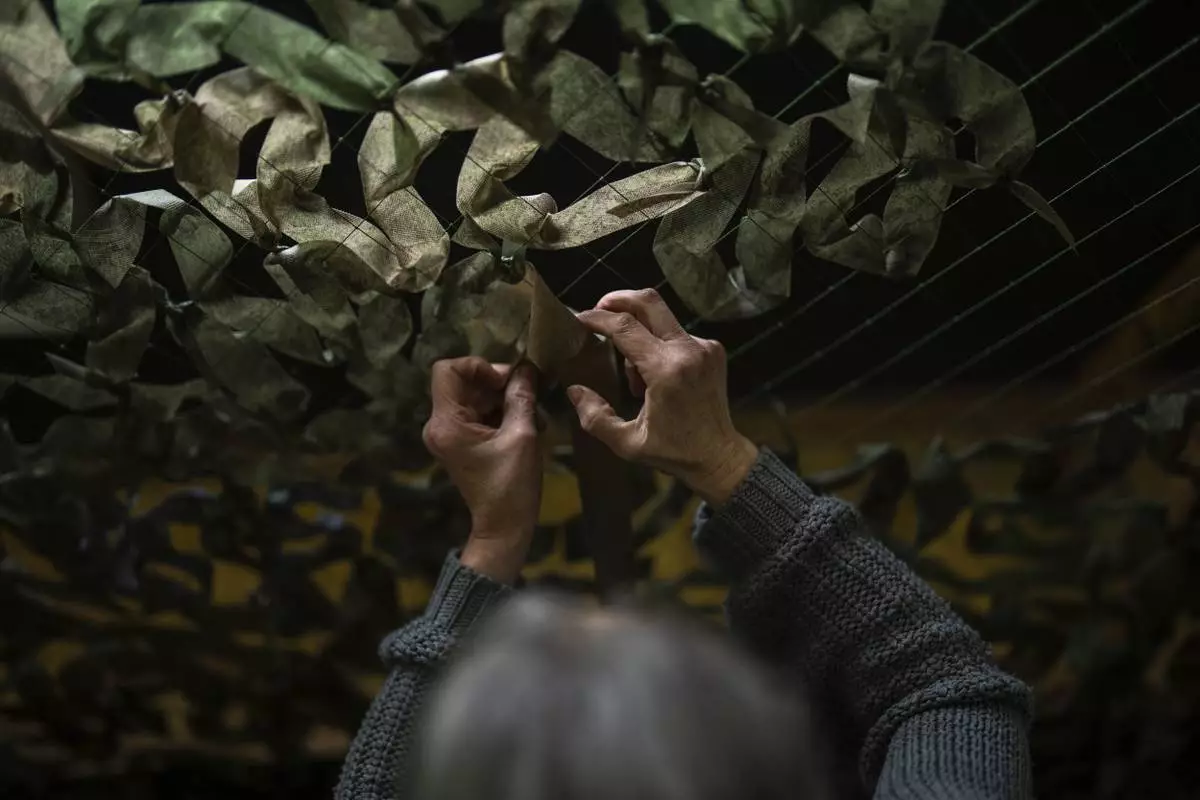
A volunteer makes a camouflage net at a facility producing material for Ukrainian soldiers in Kyiv, Ukraine, Monday, April 22, 2024. A newly approved package of $61 billion in U.S. aid may prevent Ukraine from losing its war against Russia. But winning it will be a long slog. (AP Photo/Francisco Seco)

Davyd Arakhamia, a lawmaker with Ukrainian President Volodymyr Zelenskyy's Servant of the People party, talks during an interview with Associated Press in Kyiv, Ukraine, Monday, April 22, 2024. (AP Photo/Francisco Seco)

A woman rallies to raise awareness on the fate of Ukrainian prisoners of war in Kyiv, Ukraine, Sunday, April 21, 2024. (AP Photo/Francisco Seco)
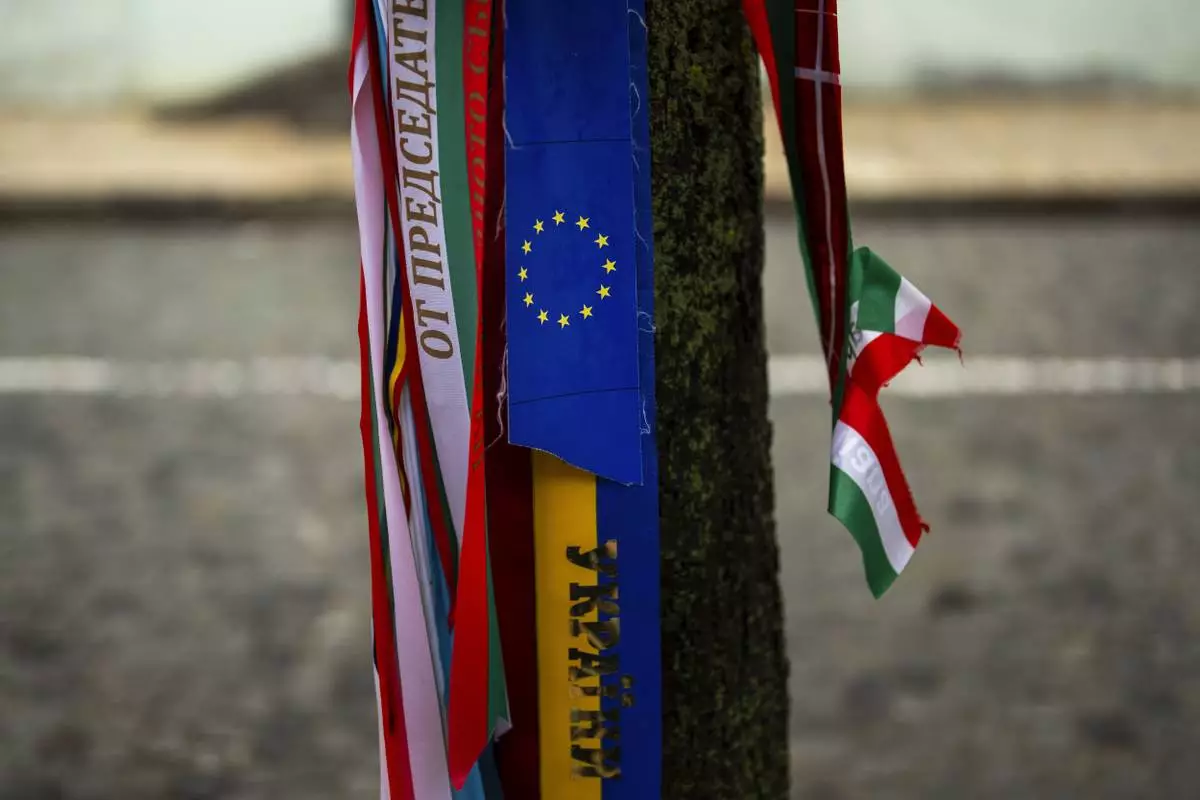
Ribbons with the colors of the European Union and Ukraine are attached to a tree next to memorial wall of Ukrainian soldiers killed during the war in Kyiv, Ukraine, Monday, April 22, 2024. (AP Photo/Francisco Seco)
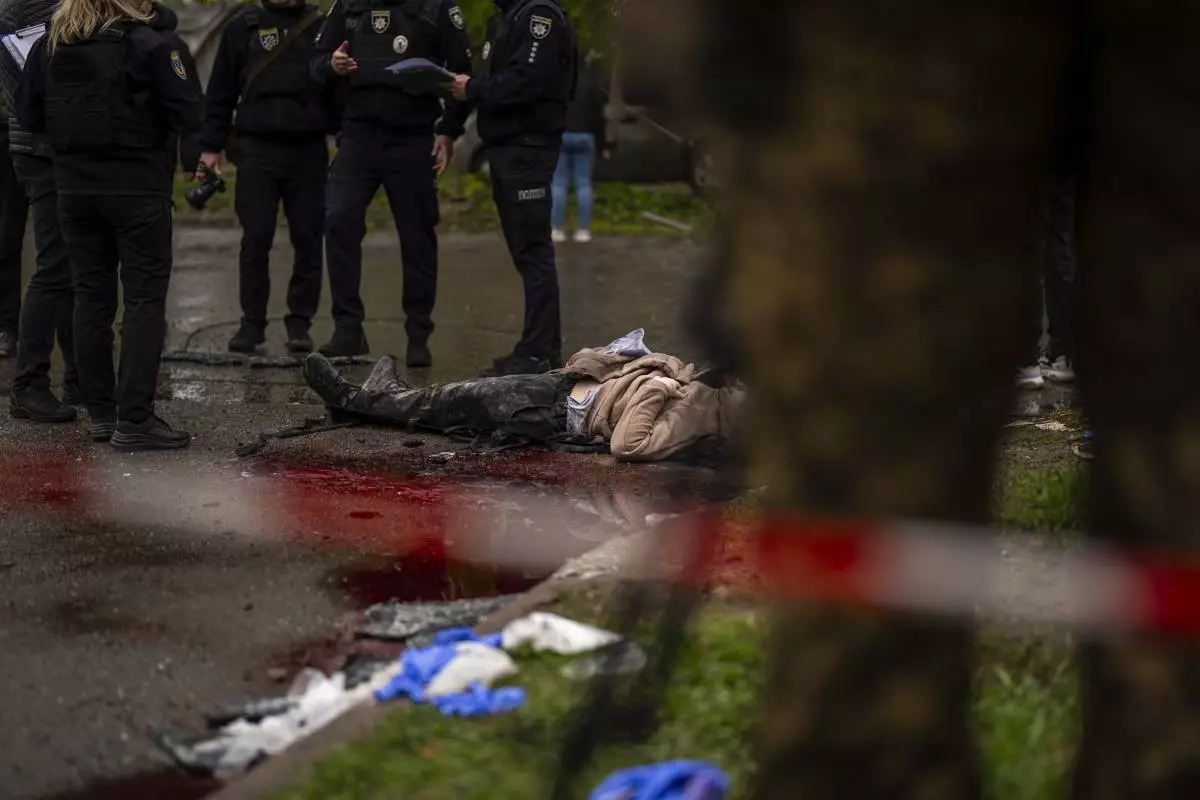
The body of a woman killed by Russian bombardment in Chernihiv, Ukraine, Wednesday, April 17, 2024. (AP Photo/Francisco Seco)

Soldiers carry the coffins of two Ukrainian army sergeants during their funeral in Lviv, Ukraine, Tuesday, April 16, 2024. (AP Photo/Francisco Seco)

















